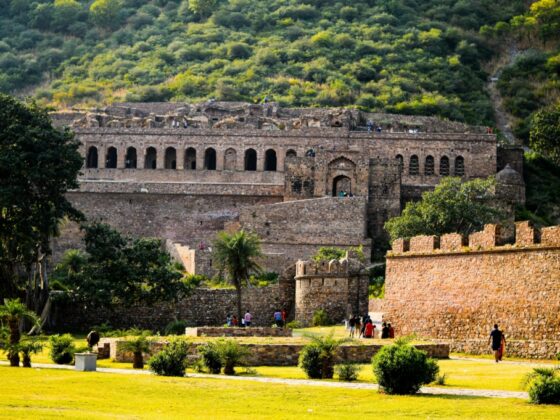Introduction
Meenakari jewelry showcases Rajasthan’s exquisite craftsmanship with its vibrant enamel designs. Skilled artisans create these intricate pieces, reflecting the grandeur of Rajputana royalty. This traditional art form has thrived for centuries, enhancing everything from royal ornaments to temple decorations. The intricate enamel work in Rajasthan showcases the rich heritage of Meenakari jewelry, blending vibrant colors with exquisite craftsmanship.

History of Meenakari in Rajasthan
Persian artisans introduced Meenakari to India, and Rajput rulers in Rajasthan nurtured its growth. Jaipur emerged as a major center for this craft, where artisans refined the technique to create elaborate jewelry for royal families.
The Process of Meenakari Jewelry Making
Creating Meenakari jewelry requires expertise and precision through the following steps:
- Designing the Base – Artisans carve intricate designs on gold, silver, or copper surfaces.
- Engraving the Pattern – They engrave delicate motifs inspired by nature, mythology, or geometric patterns.
- Filling with Enamel – They carefully apply vibrant enamel colors, usually red, green, and blue.
- Firing the Jewelry – High temperatures fuse the enamel with the metal.
- Polishing and Final Touches – The final piece undergoes polishing to enhance its shine and details.
Types of Meenakari Jewelry in Rajasthan
- Ek Rang Khula Meena – Features a single color of enamel.
- Panchrangi Meena – Includes five colors, commonly used in traditional Rajput jewelry.
- Gulabi Meena – Showcases Jaipur’s famous pink enamel work.
- Kundan-Meena Jewelry – Combines Meenakari with Kundan settings, a favorite among Rajput queens.
Significance of Meenakari in Royal Heritage
Meenakari jewelry symbolized status and artistic excellence in Rajasthan’s royal circles. Royals gifted these pieces during weddings and ceremonies, reflecting wealth and refined taste.
Conclusion
Enamel work in Rajasthan continues to thrive, blending tradition with contemporary appeal. Jaipur remains a hub for Meenakari jewelry, attracting artisans and collectors worldwide. This royal craft endures as an integral part of Rajasthan’s cultural heritage.


